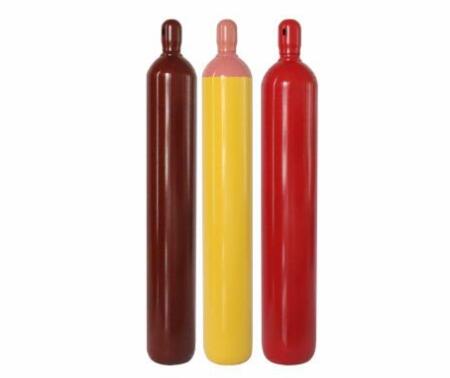Acetylene and oxygen are two industrial gases that are used in a wide variety of industries. The cylinders that hold these gases are designed with the safety of the user in mind. However, this is not enough to ensure optimal safety in industrial facilities. The following factors will help ensure the same.

Operators should be familiar with the potential risks and hazards associated with compressed gases when handling them. It is important to understand the properties of the gas being filled, such as toxicity, flammability limits, and toxicity-threshold limit values. It is also important to understand the hazards of the gas at low temperatures, high pressures, or due to the physical state of the gas (non-liquefied or liquefied, etc.). Staff should read the contents of the label on the cylinder. If the label is missing or not easily read, the cylinder should not be used. In addition to raising personnel's awareness of oxygen cylinder safety or acetylene cylinder safety, they should also be properly managed. Plant safety training.
A variety of appropriate PPE must be used when handling industrial gas cylinders. e.g., wear safety glasses, safety shoes, gas masks, and safety glasses, while using cylinders filled with compressed gas. Likewise, it is important to use flame arrestors when using acetylene cylinders in compressed air.
It is important to use appropriate handling equipment when moving cylinders within the facility or transporting them to different locations. Always use a suitable manifold cylinder pallet or cylinder trolley when moving individual cylinders. If moving to a different location, the vehicle or container used for transport must use the relevant hazardous chemical code, regardless of the color code of the cylinder. Never drag, roll or drop cylinders during use. Always take care to maintain the valve cover during transport. Avoid using valve caps to lift cylinders.
Stored cylinders must be inspected for any impact, discoloration, heat damage, or other signs. Cylinders carry labels, markings, or stencil markings for easy identification. Do not deface or tamper with these identification markings when using the cylinder.
Gas cylinders should be stored in a dry, ventilated, well-drained area, away from combustible and flammable materials. Empty cylinders must be stored separately. Facility owners should store oxygen and fuel gas cylinders separately. Storage facilities should display appropriate warning signs to inform people of what to do and what not to do in the cylinder stacking area. Always take care to store acetylene cylinders as well as other compressed gas cylinders vertically. Gas cylinders should only be purchased in small quantities. Do not store them for long periods of time.
Regulators are devices designed to reduce the working pressure of the gas. These devices vary from gas to gas. Very often, regulators are not handled and stored properly. In the long run, this improper use can lead to problems. Therefore, it is important to take some precautions when using a regulator. The following tips may be helpful.
▷Use the correct type of regulator for the gas cylinder.
▷Take care to check the regulator before connecting it to the cylinder.
▷If the connection is not correct, you may be using the wrong device. Therefore, it is wise to replace it with the correct one.
▷Close the valve of the cylinder and release the pressure of the regulator before taking it out of the cylinder.
▷Remove the regulator from the cylinder while transporting it to another location.
Copyright:@2020-2021
Comments Please sign in or sign up to post.
0
0 of 500 characters used